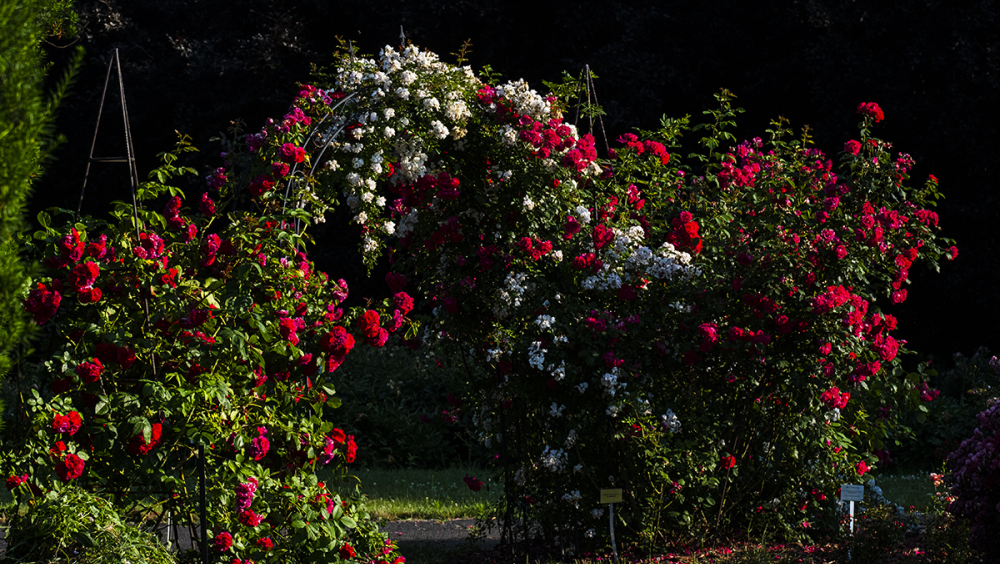European Heritage Days - Plants on the way to independence
We will show the beauty and strength of our plants to all EDD participants visiting the Botanical Garden in Powsin on September 12-13 and September 19-20. Registration is required for the event: serwisaty@obpan.pl
The hundredth anniversary of Poland's wedding to the sea is a great opportunity to show all the overseas species sung by Fiedler, studied by Forster, Raciborski, and many other Polish travelers. We will talk about orchids caught in America by Warszewicz; Laminaria looked at by an ecologist and evolutionist, young Rostafiński, boreal willows and Sudeten relics of glaciation tracked by Wichura and the Wodzicki wood collection, one of the richest arboretums of the 19th century, where certain species were acclimatized earlier than in Great Britain, the Netherlands or Germany. We will mention Józef Paczoski, the founder of the Askania Nowa nature reserve in Ukraine, a tireless fighter for the creation of the Białowieża National Park, the creator of phytosociology as a new branch of botany. We will visit our wonderful Botanical Garden, so we cannot miss mention of Franciszek Kamieński - director OB. in Odessa, discoverers of the phenomenon of mycorrhiza or about Kazimierz Bassalik - director of the OB. in Basel, and then the director of the Institute in Puławy. A visit to the cryobank is a time to remember the author of the "Natural History of Ice" - Boleslaw Dobrowolski. So that the public does not chew us that "you praise others, you do not know yours, you do not know what you have", we will also present a few Polish plants for which foreigners came to come. For example our famous spruce trees, whose English name still reflects their spruce origin - from Prussia. Also "Riga pine" from Podlasie and Mazovia, which the French wanted to cultivate in their mountains. " discoverers of the phenomenon of mycorrhiza or about Kazimierz Bassalik - director of the OB. in Basel, and then the director of the Institute in Puławy. A visit to the cryobank is a time to remember the author of the "Natural History of Ice" - Boleslaw Dobrowolski. So that the public does not chew on us that "you praise others, you do not know yours, you do not know what you have", we will also present a few Polish plants for which foreigners came. For example our famous spruce trees, whose English name still reflects their spruce origin - from Prussia. Also "Riga pine" from Podlasie and Mazovia, which the French wanted to cultivate in their mountains. " discoverers of the phenomenon of mycorrhiza or about Kazimierz Bassalik - director of the OB. in Basel, and then the director of the Institute in Puławy. A visit to the cryobank is a time to remember the author of the "Natural History of Ice" - Boleslaw Dobrowolski. So that the public does not chew on us that "you praise others, you do not know yours, you do not know what you have", we will also present a few Polish plants for which foreigners came. For example our famous spruce trees, whose English name still reflects their spruce origin - from Prussia. Also "Riga pine" from Podlasie and Mazovia, which the French wanted to cultivate in their mountains. " You don't know yours, you don't know what you have ”we will also present a few Polish plants for which foreigners came. For example our famous spruce trees, whose English name still reflects their spruce origin - from Prussia. Also "Riga pine" from Podlasie and Mazovia, which the French wanted to cultivate in their mountains. " You don't know yours, you don't know what you have ”we will also present a few Polish plants for which foreigners came. For example our famous spruce trees, whose English name still reflects their spruce origin - from Prussia. Also "Riga pine" from Podlasie and Mazovia, which the French wanted to cultivate in their mountains. "
